Island |
|
|
|
| Übersicht – Contents: | |
Island |
|
|
|
| Übersicht – Contents: | |
Flaggen – Flags: |
|
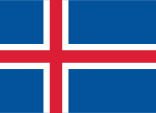 |
National- und Handelsflagge   |
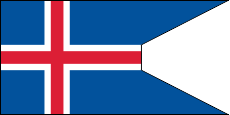 |
Staatsflagge – state flag & Flagge der Küstenwache – flag of the coast guard Seitenverhältnis – ratio = 18:36 (1:2), Quelle/Source, nach by: Flaggen und Wappen, Corel Draw 4 |
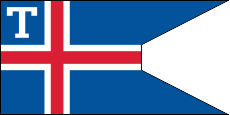 |
Zollflagge – customs flag, Seitenverhältnis – ratio = 18:36 (1:2), Quelle/Source, nach by: Die Welt im bunten Flaggenbild |
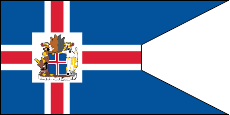 |
Flagge des Präsidenten – flag of the president, Seitenverhältnis – ratio = 18:36 (1:2), Quelle/Source, nach by: Flaggen und Wappen, Corel Draw 4 |
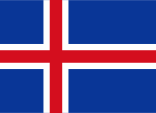 |
Farbvorschlag in pt 287 und pt 1795 – colour proposal in pt 287 and pt 1795, Quelle/Source, nach by: Wikipedia (DE) |
historische Flaggen – historical Flags: |
|
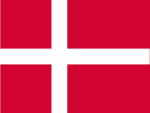 |
1380–1918, |
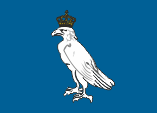 |
1921–1943, |
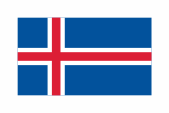 |
Lotsen(ruf-)flagge – pilot jack, Quelle/Source, nach by: Die Welt im bunten Flaggenbild Diese Art Flaggen wurde im 20. Jahrhundert abgeschafft, heute gilt – This type of flag was abolished in the 20th century, today is: |
Bedeutung/Ursprung der Flagge – Meaning/Origin of the Flag: |
|
| Die Flagge Islands ist blau mit einem weißgerändertem rotem skandinavischem Kreuz. Blau und Weiß (Silber) sind die historischen isländischen Farben. Das skandinavische Kreuz soll auf die Zugehörigkeit zur nordischen Völkerfamilie verweisen. | The flag
of Iceland is blue with a white-bordered red scandinavian cross. Blue and
white (silver) are the historical Icleandic colours. The scandinavian cross should point at the affiliation to the nordic people's family. |
| Das Rot innerhalb des skandinavischen Kreuzes auf der isländischen Flagge soll auf die historischen Verbindungen zu Dänemark hinweisen. Die in farblicher Umkehrung vorhandene Ähnlichkeit zur norwegischen Flagge ist so wahrscheinlich rein zufällig, obwohl behauptet wird, dass auf diese Weise auf die anfängliche Zugehörigkeit Islands zu Norwegen, und auf die Besiedelung von dort aus hingewiesen werden soll. |
The red in the scandinavian cross should remember the
historical connexions to Denmark. The in inversion of the colours existing similarity to the Norwegian flag is in this way probably sheer accidental, although there are allegations that in this way should be pointed out at the initially affiliation of Iceland to Norway and the colonization from there. |
| Die Farben werden wie folgt gedeutet: Blau steht für das Meer, Weiß für Eis und Schnee, Rot für die Vulkane. | The colors are interpreted as follows: Blue stands for the sea, white for ice and snow, red for the volcanoes. |
| Dem Farbsystem "Dictionnaire International de la Couleur" (DIC, SCOTDIC) folgend, wurden die Farben Islands 1991 definiert, und zwar als Himmelblau: SCOTDIC 693009 und Feuerrot: DIC ICELAND FLAG RED. Dadurch, das das Blau vorher nicht definiert war, wurde in der Praxis häufig irgendein Blau eingesetzt, häufiger auch dunkel ausfallend. Die vielen verschiedenen und auch dunklen Blautöne, die in Büchern und Katalogen reproduziert wurden zeigen das deutlich. Vermutlich lag und liegt das an dem eigenartigen DIC-Farbsystem. Es gibt überlegungen die Farben im bekannteren Pantone-Farbsystem (PMS) neu zu definieren, und zwar Blau = pt 287 und Rot = pt 1795, was leichte Änderungen in der Färbung bedeuten würde. Wahrscheinlich wird das Projekt deshalb erst mal nicht mehr verfolgt. |
Following the colour
system "Dictionnaire International de la Couleur" (DIC, SCOTDIC), the
colours of Iceland were defined in 1991 as heaven blue: SCOTDIC 693009 and fire
red: DIC ICELAND FLAG RED. As the blue was not defined before, in practice any blue was often used, more often dark. The many different and also dark shades of blue reproduced in books and catalogues show this clearly. Presumably, this was and is due to the peculiar DIC colour system. There are considerations to redefine the colours in the better known Pantone colour system (PMS), namely blue = pt 287 and red = pt 1795, which would mean slight changes in colouring. This is probably why the project will not be pursued for the time being. |
| Solange Island zu Dänemark gehörte (bis 1919), musste die dänische Flagge gehisst werden. Im Jahre 1903 wurde Island ein neues Wappen in den Farben Weiß und Blau verliehen (weißer Falke auf Blau), und man begann inoffiziell Flaggen in verschiedenen Varianten aus diesen beiden Farben zu verwenden, meist mit dem skandinavischen Kreuz, ebenso eine Wappenflagge, die den gekrönten silbernen Falken auf blauem Flaggentuch zeigte. | So long as Iceland belonged to Denmark (to 1919) has to be used the Danish flag. In the year 1903 Iceland got awarded a new coat of arms in the colours white and blue (white/silver hawk on blue), and they started to use unofficialy flags in diverse variants from this both colours mostly with the scandinavian cross, just as a scutcheon flag with the heraldry of the coat of arms, which showed the crowned silvery hawk on a blue bunting. |
| Im Jahre 1913 wurde die heutige Flagge entworfen und am 22.11.1913 vom Parlament angenommen. Ab dem 19.06.1915 durfte sie an Land sowie auf Schiffen in Territorialgewässern genutzt werden. | In the year 1913 the current flag was designed and adopted by the parliament on 22nd of November in 1913. From the 19th of June in 1915 it was allowed to use it on land as soon as on vessels in territorial waters. |
| An dem 01.12.1918, dem Tag der Unabhängigkeit von Dänemark, durfte die Flagge dann auch auf hoher See gezeigt werden. Sie wurde jedoch erst im Jahre 1919 vom dänischen König Christian X. offiziell anerkannt. Als am 17.06.1944 die Republik proklamiert wurde, hat man die Flagge als Staatsflagge übernommen. |
On 1st of December in
1918, the day of the independence from Denmark, the flag could be shown on
the high seas. However, it was not until the year 1919 officially recognized by the Danish King Christian X. As the republic was proclaimed on the 17th of June in 1944 this flag was assumed as state's flag. |
| Island blieb ab 1918 mit Dänemark in Personalunion verbunden. Das hieß, dass der König von Dänemark auch der König von Island war. Im Jahre 1921 erhielt der König seine eigene Flagge. Sie zeigte das Abbild des alten Wappens, einen gekrönten, weißen Falken auf Blau. |
From 1918 Iceland remained associated with Denmark in personal union.
This meant that the king of Denmark was also the King of Iceland. In the year 1921 the king received his own flag. It showed the image of the old coat of arms, a crowned white hawk on blue. |
|
Quelle/Source: Flags of the World, Die Welt der Flaggen, Flaggen Wappen Hymnen, Flaggen und Wappen der Welt, Wikipedia (DE) |
|
Wappen – Coat of Arms: |
|
 |
13.–14. Jahrhundert – 13th –14th century, Wappen von Island – coat of arms of Iceland, Quelle/Source, nach by: sguardosulmedioevo.org |
 |
14. Jhd. bis 1903 – 14th cent. until 1903, Wappen von Island – coat of arms of Iceland Quelle/Source, nach by: Flags of the World |
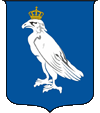 |
1903–1919, Wappen Islands – coat of arms of Iceland, Quelle/Source, nach by: Flags of the World, Dank an Roland Daebel |
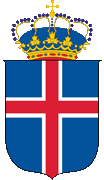 |
1919–1944, Wappenschild von Island, – scutcheon of Iceland, Quelle/Source, nach by: Flags of the World |
 |
seit/since 1944, Wappenschild von Island – scutcheon of Iceland, Quelle/Source, nach by: Flags of the World |
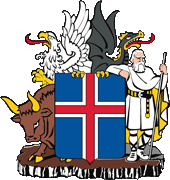 |
seit/since 1944, Großes Staatswappen Islands – greater coat of arms of Iceland Quelle/Source, nach by: Flaggen und Wappen, Corel Draw 4 |
Bedeutung/Ursprung des Wappens – Meaning/Origin of the Coat of Arms: |
|
| Aus der norwegischen Zeit der Insel ist ein 12-fach gestreiftes Wappen in Weiß und Blau bekannt. Unter den Dänen wurde ein rotes Wappenschild eingeführt, dass einen silbernen Dorsch (Kabeljau) unter eine Krone zeigt. Am 03.10.1903 wurde ein neues Wappen eingeführt. Es zeigte einen silbernen Falken auf einem blauen Schild. Damit wurden wieder die historischen Farben Islands auf dem Wappen wiedergegeben. Das heutige große Staatswappen wurde am 12.02.1919 durch königlichen Beschluss angenommen, und am 17.06.1944 insofern abgeändert, dass die Krone entfernt wurde, man hat die Schildhalter ein wenig verändert und ein wenig anders angeordnet, und als Postament wurde eine Felsenplatte eingesetzt. Sie steht für Island und seine felsige Küste. Die vier Schildhalter (Stier, Krieger, Drache und Greif) sind die legendären Beschützer Islands, wie sie in der "Heimskringla Saga" beschrieben sind. | From the
Norwegian times of the island is known a twelvefold striped scutcheon in
white and blue. Under the Danish was introduced a red blazon which showed a
silvery codfish below a crown. On the 3rd of October in 1903 was introduced
a new coat of arms. It showed a silvery hawk on a blue shield. Therewith
were reproduced again the historical colours of Iceland within a coat of
arms. The today's greater coat of arms of the state was adoped at the 12th of February in 1919 by royal decision and changed in that on 17th of June in 1944 that the crown was removed, the shield holders were changed a little bit and arranged slightly different and as a bracket was deployed a rock plate. It stands for Iceland and it's craggy coast. The four shield holders (bull, warrior, dragon and griffin) are the legendary protectors of Iceland, how described in the "Heimskringla Saga". |
| Quelle/Source: Flags of the World, Die Welt der Flaggen, Flaggen Wappen Hymnen, Flaggen und Wappen der Welt | |
Landkarten – Maps: |
Lage – Position: |
Landkarte des Landes – Map of the Country: |
Zahlen und Fakten – Numbers and Facts: |
|
|
|
|
|
|
|
|
|
|
|
|
|
|
|
|
|
|
|
|
Geschichte: |
| ca. 750 ·
legendäre erste Besiedlung Islands durch Kelten und irische Mönche 874 · Beginn der norwegischen Besiedlung 930 · erstes Althing (Nationalversammlung) ca. 1000 · beginnende Christianisierung, die Germanische Religion hält sich aber bis in die heutigen Tage seit ca. 1200 · wachsende wirtschaftliche Abhängigkeit von Norwegen 1262 · isländisch-norwegischer Vertrag, Island unterstellt sich der norwegischen Krone 1294 · der König erlässt ein Handelsverbot mit dem Ausland 1380 · durch die Nachfolge eines dänischen Thronfolgers auf den vakanten norwegischen Thron werden Island und Norwegen dänischer Besitz 1550 · Reformation 1602 · der König erlässt erneut ein Handelsverbot mit dem Ausland, Handelsmonopol für dänische Kaufleute 1800 · das Althing (Nationalversammlung) wird abgeschafft 1843 · Wiederzulassung des Althings 1874 · Island erhält eine Verfassung, Gewährung innerer Autonomie 01.12.1918 · Island erhält eine neue Verfassung, wird ein selbständiges Königreich, in Personalunion mit Dänemark verbunden (dänischer König = isländischer König) 1940 · Dänemark wird von deutschen Truppen besetzt, das Althing vergrößert die Befugnisse der isländischen Regierung 10.05.1940 · britische Truppen besetzen Island 07.07.1941 · US-amerikanische Truppen besetzen Island und beginnen Militärstützpunkte einzurichten 23.12.1943 · Island kündigt die Personalunion mit Dänemark 17.06.1944 · nach erfolgreicher Volksabstimmung Umwandlung Islands in eine Republik 1949 · Gründungsmitglied der NATO 1951 · Vertrag mit den USA, weiterer Betrieb der US-Militärbasen 1958 · Ausdehnung der Territorialgewässer auf 12 Seemeilen 1972 · Ausdehnung der Fischereigrenzen auf 50 Seemeilen 1972 · die Germanische Religion (Asatru) wird wieder offiziell anerkannt 1975 · Ausdehnung der Fischereigrenzen auf 200 Seemeilen 2006 · die US-Truppen verlassen das Land 2009 · Beitrittsgesuch zur Europäischen Union 2015 · Zurückziehen des Beitrittsgesuchs zur Europäischen Union |
History: |
| ca. 750 · legendary initial settlement of Iceland by Celts and Irish monks 874 · beginning of the Norwegian settlement 930 · first Althing (national assembly) ca. 1000 · beginning christianization, but the Germanic religion maintains until the present days since ca. 1200 · growing economic dependence from Norway 1262 · Icleandic-Norwegian contract, Iceland subordinates itself the Norwegian crown 1294 · the king issues a trade interdiction against foreign countries 1380 · by the succession of a Danish successor on the vacant Norwegian throne become Iceland and Norway a Danish possession 1550 · reformation 1602 · the king issues a trade interdiction against foreign countries again, trade monopoly for Danish merchants 1800 · the Althing (national assembly) gets abolished 1843 · re-establishing of the Althing 1874 · Iceland gets a constitution, granting of internal autonomy 1st of December 1918 · Iceland gets a new constitution, becomes an independent kingdom obliged in personnel union with Denmark (Danish king = Icleandic king) 1940 · Denmark gets occupied by German troops, the Althing enlarges the authorities of the Icleandic government 10th of May 1940 · British troops occupy Iceland 7th of July 1941 · US-American troops occupy Iceland and begin to prepare military bases 23rd of December 1943 · Iceland terminates the personnel union with Denmark 17th of June 1944 · after successful plebiscite transformation of Iceland into a republic 1949 · founder member of NATO 1951 · contract with the USA, further maintaining of the US military bases 1958 · extension of the territorial waters on 12 nautical miles 1972 · extension of the fishery's borders on 50 nautical miles 1972 · the Germanic religion (Asatru) gets officially recognized again 1975 · extension of the fishery's borders on 200 nautical miles 2006 · the U.S. troops leave the country 2009 · application to join the European Union 2015 · withdrawal of the application to join the European Union |
| Quelle/Source: Atlas zur Geschichte, World Statesmen, Wikipedia (D), Discovery '97, Weltgeschichte |
Ursprung des Landesnamens – Origin of the Country's Name: |
|
| Die Existenz Islands war wahrscheinlich schon in der Antike bekannt. Der Grieche Pytheas erwähnt ein "Thule", und auch das "Landnámabók" aus dem 11. Jahrhundert erwähnt diesen Namen und bringt ihn in Zusammenhang mit dem irischen Mönch Beda. Aber ob das heutige Island wirklich Thule war ist nicht bekannt. Der Wikinger Naddoddur erreichte um das Jahr 860 die Insel, nannte sie jedoch "Snæland" (Schneeland). Wenig später landete der Schwede Garðar Svavarsson auf der Insel und benannte sie nach sich selbst "Garðarsholmur". Auch der Wikinger Flóki Vilgerðarson landete in diesen Jahren auf der Insel uns dort zu siedeln. Er nannte die Insel "Island" (Eisland), inspiriert von Treibeis das er im Norden der Insel sah. | The existence of Iceland was probably already known in ancient times. The Greek Pytheas mentions a "Thule", and also the "Landnámabók" from the 11th century mentions this name and brings him in connection with the Irish monk Beda. But if
the today's Iceland really was Thule is not known. The Viking Naddoddur reached the island around the year 860, but called it "Snæland" (snow land). A little later the Swede Garðar Svavarsson landed on the island and named her "Garðarsholmur" after himself. The Viking Flóki Vilgerðarson also landed on the island during those years. He called the island "Iceland", inspired by drift ice he saw in the north of the island. |
| Quelle/Source: Wikipedia (D) | |